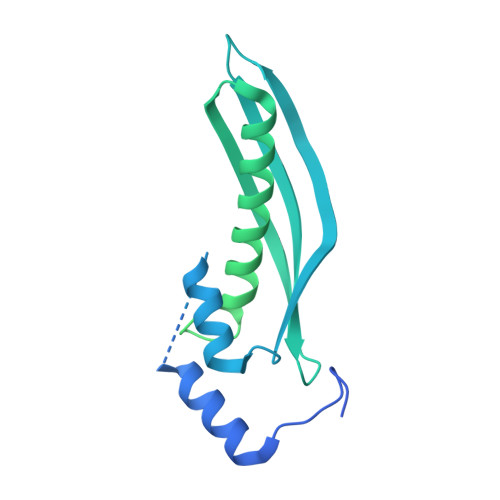Mechanism of single-stranded DNA annealing by RAD52-RPA complex.
Liang, C.C., Greenhough, L.A., Masino, L., Maslen, S., Bajrami, I., Tuppi, M., Skehel, M., Taylor, I.A., West, S.C.(2024) Nature 629: 697-703
- PubMed: 38658755
- DOI: https://doi.org/10.1038/s41586-024-07347-7
- Primary Citation of Related Structures:
8RIL, 8RJ3, 8RJW, 8RK2 - PubMed Abstract:
RAD52 is important for the repair of DNA double-stranded breaks 1,2 , mitotic DNA synthesis 3-5 and alternative telomere length maintenance 6,7 . Central to these functions, RAD52 promotes the annealing of complementary single-stranded DNA (ssDNA) 8,9 and provides an alternative to BRCA2/RAD51-dependent homologous recombination repair 10 . Inactivation of RAD52 in homologous-recombination-deficient BRCA1- or BRCA2-defective cells is synthetically lethal 11,12 , and aberrant expression of RAD52 is associated with poor cancer prognosis 13,14 . As a consequence, RAD52 is an attractive therapeutic target against homologous-recombination-deficient breast, ovarian and prostate cancers 15-17 . Here we describe the structure of RAD52 and define the mechanism of annealing. As reported previously 18-20 , RAD52 forms undecameric (11-subunit) ring structures, but these rings do not represent the active form of the enzyme. Instead, cryo-electron microscopy and biochemical analyses revealed that ssDNA annealing is driven by RAD52 open rings in association with replication protein-A (RPA). Atomic models of the RAD52-ssDNA complex show that ssDNA sits in a positively charged channel around the ring. Annealing is driven by the RAD52 N-terminal domains, whereas the C-terminal regions modulate the open-ring conformation and RPA interaction. RPA associates with RAD52 at the site of ring opening with critical interactions occurring between the RPA-interacting domain of RAD52 and the winged helix domain of RPA2. Our studies provide structural snapshots throughout the annealing process and define the molecular mechanism of ssDNA annealing by the RAD52-RPA complex.
- The Francis Crick Institute, London, UK. eric.liang@crick.ac.uk.
Organizational Affiliation:
















